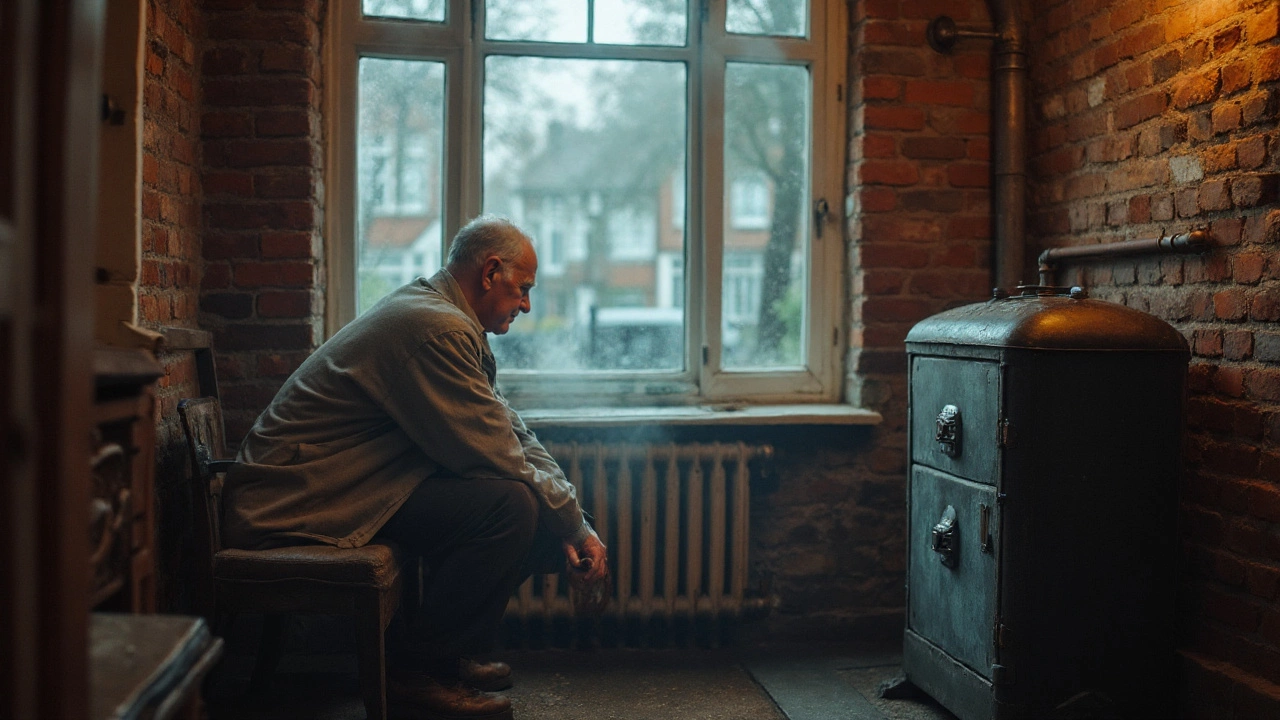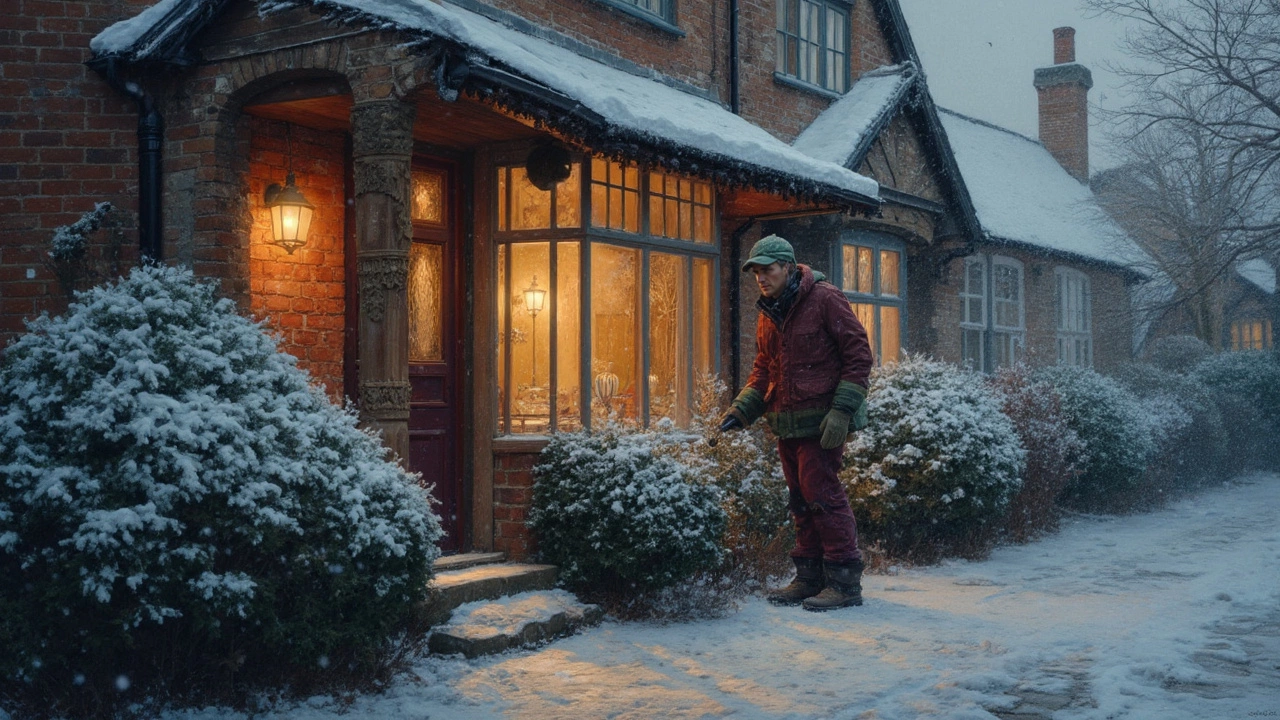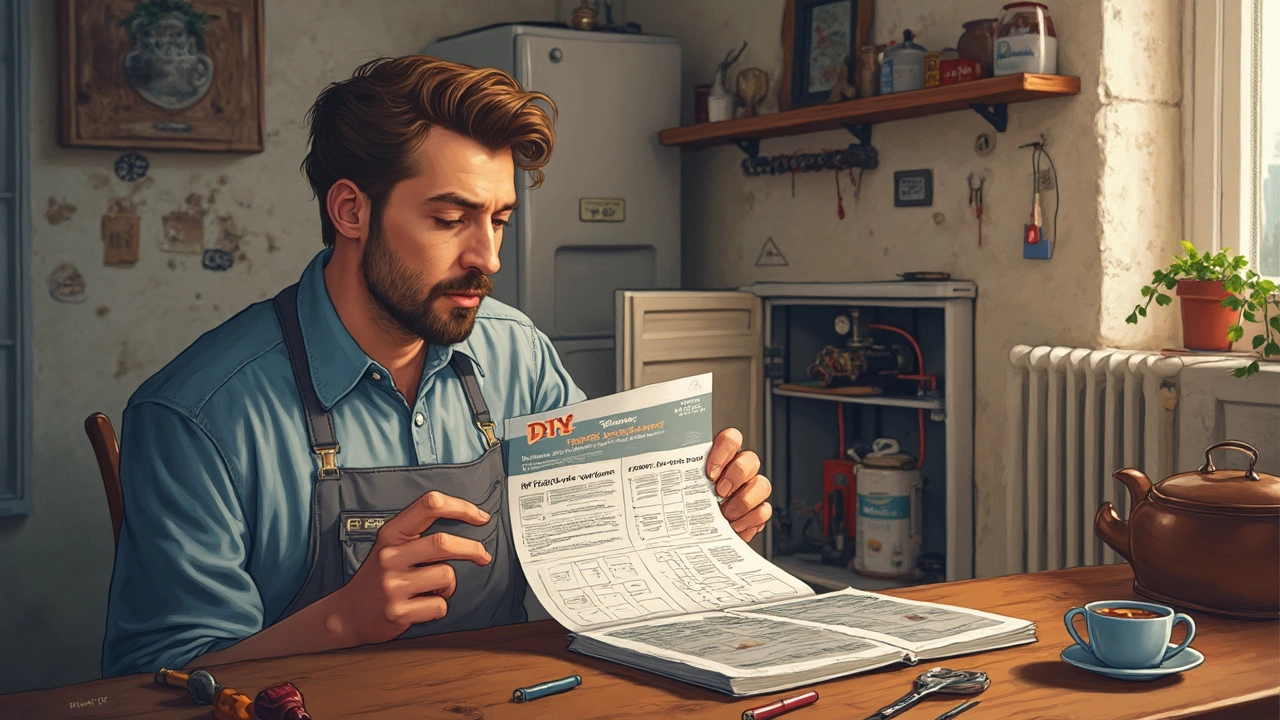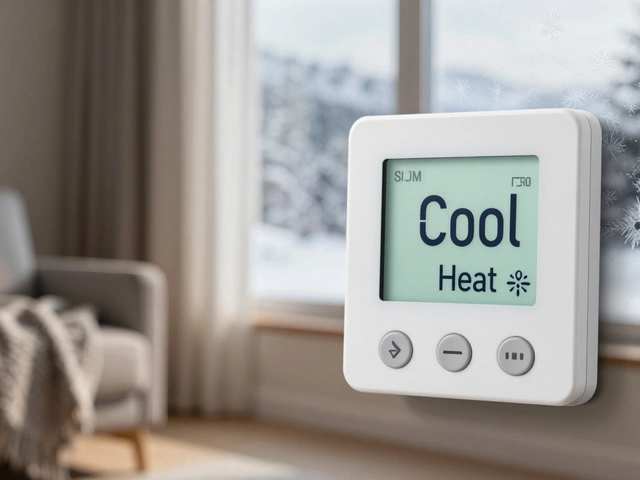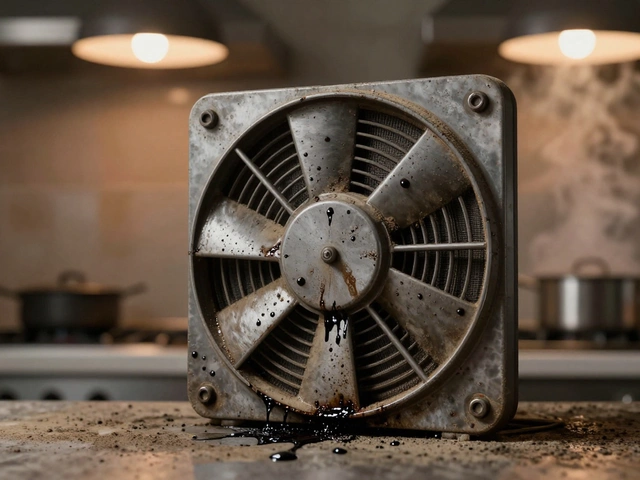Huge Victorian houses still running on ancient radiators. Family legends about Grandpa’s old floor-standing boiler rumbling along, year after year. The story goes—"they don’t make them like they used to." So it begs the question: boiler lifespan. Is 50 years just a myth, or has your old clunker got a shot? The answer isn’t as straightforward as you’d hope. Some boilers survive half a century, but most tap out far sooner. Turns out, there are a pile of factors—and some big surprises—behind how long your boiler can soldier on.
How Boilers Actually Age (And Why Most Don’t Make It to 50)
First things first, most modern boilers aren’t designed for a half-century marathon. The average combi boiler fitted today in the UK, for example, is expected to last between 10-15 years. Even cast-iron boilers—the real old timers—usually somewhere between 20 and 40 years if you treat them right. Fifty years is outlier territory, not the norm. But a rare few have made it, and a handful are still running, especially in historic buildings or those old family homes.
Why don't most boilers make it that far? For starters, materials have changed. Early 20th-century boilers and some mid-century ones feature thick cast iron and huge metal tanks. Modern boilers use far thinner steel. Why? Energy efficiency, cost savings, and space. The downside: thinner walls mean parts wear out quicker, especially with daily heating and cooling cycles that cause metal fatigue.
Another big factor is design philosophy. Old boilers were engineered to be "overbuilt," meaning they could handle stresses far beyond what they ever faced. Manufacturers didn't sweat about using too much iron or copper—the stuff was cheap, labor even cheaper. These days, everything is optimized. Tighter tolerances, lighter materials. It works great for saving energy bills and the planet, but not so much for pushing iconic longevity.
Let’s talk about maintenance, too. Those ancient monsters were simple to maintain: basic pipes and valves, little electronic tech to go wrong. Most modern boilers are chock-full of sensors, printed circuit boards, condensing units—all fantastic for performance, but instant-disposal if a part fails outside warranty.
But age isn’t measured in years alone. Hours of operation, frequency of use, and how well the boiler’s treated play a massive role. In fact, according to a 2018 study published by the UK Building Research Establishment, daily use, lime content in water, and skipped maintenance do more damage than age alone.
Want proof? Just ask a heating engineer. They’ll tell you—neglect a boiler for ten years, and it won’t outlive your dog. Show it some love—yearly checkups, water treatment, limescale control—and it might just surprise you.
Stories of 50-Year-Old Boilers: Fact or Just Urban Legend?
You’ve maybe heard them—rumors about that house down the street still running its original ‘60s boiler, chugging like clockwork every winter. Seems impossible, but it does happen. Some of the most famous examples are bulky cast iron "sectional" boilers, often installed in schools, churches, or old government buildings. A few fire up every morning, five decades after installation, serving up hot water like it’s no big deal.
A notable case: Manchester Town Hall’s colossal 1964 coal-to-gas conversion boiler was still heating the place well into the 2010s. Careful retrofitting, constant TLC, and top-notch water quality were key. Even so, only a tiny fraction of these relics survive, and most don’t meet modern safety or efficiency standards.
But what about in homes? In neighborhoods filled with houses built before 1970, you’ll sometimes find boilers pushed past their 40th and 50th birthday. Typically, they picked up a new burner or a couple of tank repairs along the way, plus annual service. Rare, but not fake news.
So why did these survive? A few reasons:
- Built with ridiculously thick metal—think radiator tank, not soda can.
- Had regular servicing by the same engineer (sometimes for decades).
- Ran on "soft" water, so limescale didn’t build up as fast inside.
- Parts were actually fixable—with a bit of welding and spare bits.
Ironically, this longevity is almost impossible today, thanks in part to planned obsolescence. Modern manufacturers assume you’ll replace instead of repair. If you manage to find a 30-year-plus boiler in good condition, it’s basically the appliance equivalent of a classic car—looks cool, but not always wise to drive every day.

What Really Decides a Boiler’s Lifespan?
So, if you want your boiler to go the distance, you need to get friendly with a few critical factors. Some you can control. Others, not so much.
- Build Quality: Older boilers used heavy cast iron or copper, while most new ones lean on lighter steel and aluminum components.
- Water Quality: Hard water (full of calcium and magnesium) tears up internal parts. Soft water or treated water gives tanks and heat exchangers a longer, happier life.
- Maintenance: Annual servicing matters. Skipping it invites corrosion, faulty seals, and all sorts of slow ruin. British Gas and Vaillant both warn that missing just a couple of yearly checkups can cut up to 30% from your boiler’s expected life.
- Installation: A rushed job or half-baked fit—crooked pipes, poor venting, mismatched pump—can destroy a brand new boiler in no time.
- Usage Patterns: Boilers designed for low, steady demand usually last longer. Too much on-off cycling or pushing an undersized boiler to its absolute max is a fast lane to the junkyard.
- Design Era: Basically, the older it is, the more likely it’s overbuilt. Anything built this century is rarely expected to push past 15-20 years.
- Repairs vs. Replacements: Pre-1990s boilers can often be mended by swapping out failing parts. Modern modular designs mean a single electronic glitch can spike the whole unit.
If you’re tempted to hang on to an ancient boiler for nostalgia or to "see how long it’ll go," think twice about safety. Hard fact: Gas Safe Register data from 2020 shows the risk of carbon monoxide leaks climbs dramatically after the 25-year mark, especially on unserviced units.
| Boiler Type | Average Lifespan (Years) | Chance of Lasting 50+ Years (%) |
|---|---|---|
| Cast Iron/Copper (pre-1975) | 25-50 | 10 |
| Modern Steel (1990+) | 10-15 | <1 |
| High-Efficiency Condensing | 8-12 | 0 |
Should You Keep or Replace an Old Boiler?
Here’s a spicy one—if your boiler’s chugging along after forty years, should you keep it or swap for a shiny new one? People get attached—old boilers have a kind of steampunk charm, and they sometimes seem immortal. But there’s a reality check waiting around the corner.
For one thing, efficiency. Sixty percent. That’s about what a typical 1960s/1970s cast-iron unit puts out on a good day. Modern condensing boilers? Up to 95%. That means your ancient hunk is costing you a fortune every time you flick the thermostat.
Another issue: safety. No modern flame supervision. No automatic shutoffs for leaks or blocked vents. New standards in the last twenty years require layers of safety features that just don’t exist on pre-1980s models.
Spares are another dying breed. Try finding a thermocouple for a 1974 Glow-worm. You could get lucky on eBay, but eventually, it dries up. Even with a friendly local repair guy, parts scarcity sets a hard end date.
Some people keep the old boiler as a backup and add a modern model for everyday use—sort of like keeping a horse in the garage in case the car breaks down. But honestly, unless you want to win a neighborhood "oldest boiler still running" contest, it might be time to modernize.
This decision isn’t just about money. Carbon footprint gets a lot of headlines, and for good reason. Home heating makes up almost 15% of UK greenhouse emissions. If your old beast is puffing out far more CO2 than today’s models, replacing it is doing the planet a favour.
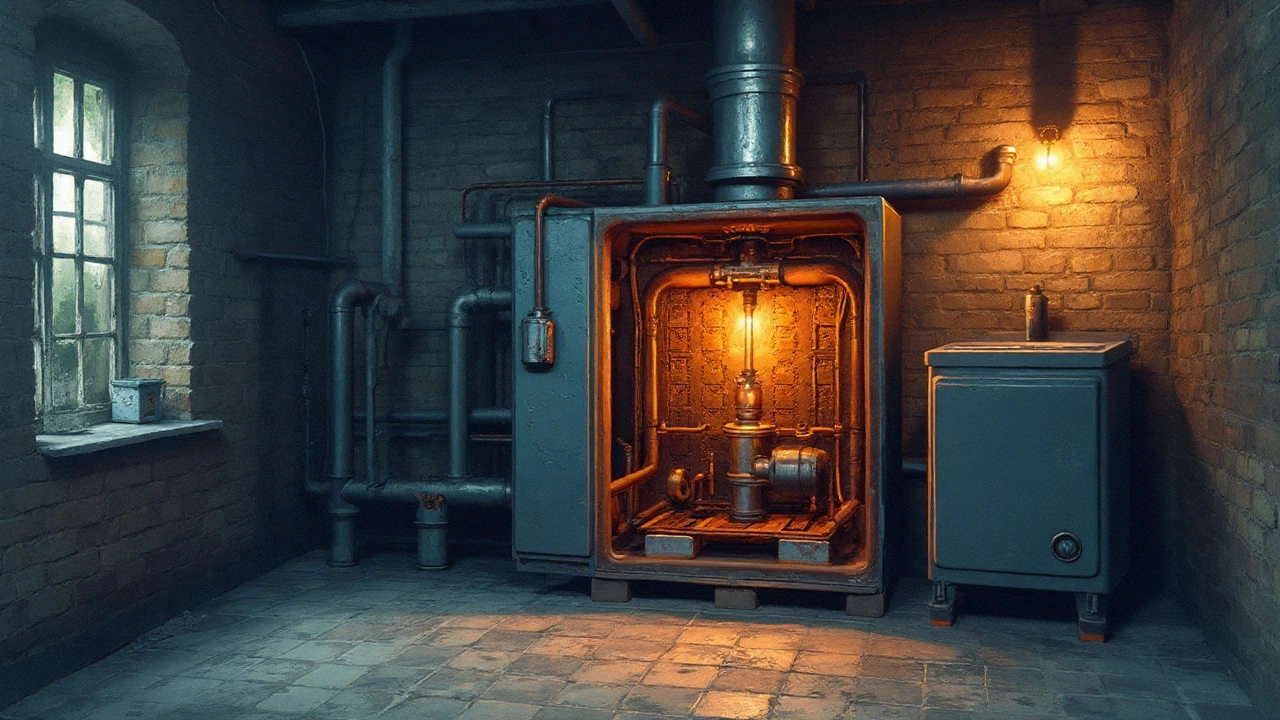
Tips to Extend Your Boiler’s Life (Without Going Full Mad Scientist)
If you’re on a mission to squeeze every year from your boiler—or just want yours to outlast your neighbor's—here’s what actually works:
- Get annual servicing without fail. Every single year, no matter how "fine" it seems.
- Install a magnetic filter in your central heating system. This catches rust and sludge that kill inside parts.
- Treat your water. If you have hard water, install a softener or use corrosion inhibitors recommended by the manufacturer.
- Keep vents and flues clear. Blockages crank up the danger and force the boiler to work harder than it should.
- Fix leaks—right away. Even small drips corrode metal fast, shortening lifespan.
- If your system is old and noisy, power flush it to remove built-up gunk inside pipes and radiators.
- Don’t "set and forget." Actually monitor your system’s pressure, look and listen for clunks, rattles, funny smells.
- Use a programmable thermostat so the boiler isn’t firing more than it needs.
The bottom line? While a handful of boilers do crawl past 50, they’re unicorns, not the rule. If you’ve got an old-school tank still alive, treat it as a marvel, but don’t bet your comfort (or safety) on it hitting the golden anniversary. And if you want your newer model to last, a little attention goes further than wishful thinking.
